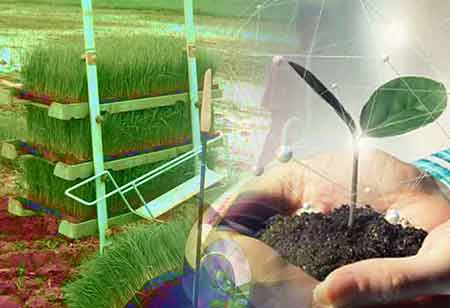Thank you for Subscribing to Agri Business Review Weekly Brief
Transforming The Farming Industry With Automation
Technological advancements, from robotics and drones to computer vision software, have

By
Agri Business Review | Thursday, July 28, 2022
Stay ahead of the industry with exclusive feature stories on the top companies, expert insights and the latest news delivered straight to your inbox. Subscribe today.
Technological advancements, from robotics and drones to computer vision software, have entirely changed modern agriculture.
FREMONT, CA: The development of agriculture was a critical time for humanity. Humans' capacity to engineer the environment to generate enough food to sustain massive population growth was the first profound change in the relationship between fully-modern humans and the environment. The advent of agriculture kickstarted a broader range of advancements, from fire and prepared food to self-driving machinery.
Technological advancements, from robotics and drones to computer vision software, have entirely changed modern agriculture. Farmers now have admittance to tools that will support them meet the requirements of our world's ever-increasing population.
What is farm automation?
Farm automation, usually associated with "smart farming," is a technology that makes farms more efficient and automates the crop or livestock production cycle. A growing number of companies are working on robotics innovation to develop drones, autonomous tractors, robotic harvesters, automatic watering, and seeding robots.
Even if these technologies are relatively new, the industry has seen many conventional agriculture companies embrace farm automation in their processes.
What technologies are being utilized in farm automation?
The main goal of farm automation technology is to cover easier, mundane tasks. Here are some main technologies that farms are most commonly utilizing.
Harvest Automation
Harvesting fruits and vegetables have constantly proven to be a difficult problem to automate. Harvest robots must be gentle with the product to avoid bruising and damage. Agrobot has effectively developed the first robot for mildly harvesting strawberries, never mind where and how they are grown. From a flexible mobile platform, up to 24 robotics operators work together to collect the fruit, which satisfies the farmer's quality standard.
Autonomous Tractors
Rabbit Tractor's autonomous tractor delivers worth row crop farmers through reduced labor costs, increased efficiency across operations, and increased yield. Autonomous tractors can be controlled remotely or pre-programmed to give a producer full autonomy. Tractor automation kits are even being prepared by Bear Flag Robotics, making automation more accessible for farmers by reasonably retrofitting existing tractors with cutting-edge driverless technology and implementing control.
Seeding and Weeding
Robotics created for seeding and weeding can focus on specific crop areas. Seeding can easily reduce labor and mundane tasks on the farm. With computer vision, weeding robotics can be incredibly accurate and reduce pesticide usage by 90%.
Drones
American Robotics is creating a fully autonomous "Robot-as-a-service" with an autonomous drone, base station, and analytics platform that provides insights to growers at resolutions, frequencies, and speeds never before possible.
Drones can be employed to monitor conditions remotely and even apply fertilizers, pesticides, and other treatments above. They can also quickly and cost-effectively pinpoint problem areas with imagery and infrared analysis to help farmers diagnose issues early on."
Advantages of farm automation
Farm automation technology handles major issues like a rising global population, farm labor shortages, and changing consumer preferences. The advantages of automating traditional farming processes are monumental.
Consumer Benefit
Consumers' preferences are moving towards organic and sustainably-produced products. With automation technology, produce attains consumers faster, fresher, and more sustainably. Increased productivity from automation increases the yield and rate of production, therefore reducing consumer costs.
Reduced Environmental Footprint
Farm automation practices can make agriculture more productive while simultaneously decreasing the ecological footprint of farming. Site-specific application software can reduce the number of pesticides and fertilizers used while reducing greenhouse gas emissions.
Challenges of farm automation
Still, there are problems of farm automation that must be overcome. High costs to adopt robotic technologies present a huge barrier to entry for farmers, especially in developing countries. For instance, robotic planters must carry water or pesticides with significant weight; the hardware must be built differently, resulting in higher costs to make it larger.
Technical issues and equipment breakdowns also present high costs to fix for such specialized equipment. Farmers must combine their knowledge and experience with these new technologies to fully utilize farm automation.
Looking ahead
We are just at the early stages of farm automation technology, but it will be able to transform agriculture. It offers a path toward sustainable and more efficient agriculture through technological advancements, production systems, and software.
Automation technology has become more sophisticated, and what was cutting-edge just a few years ago will become commonplace and cost-effective soon. The human element will often be a fundamental aspect of managing a farm, but fully autonomous vehicles and farm equipment are coming.





